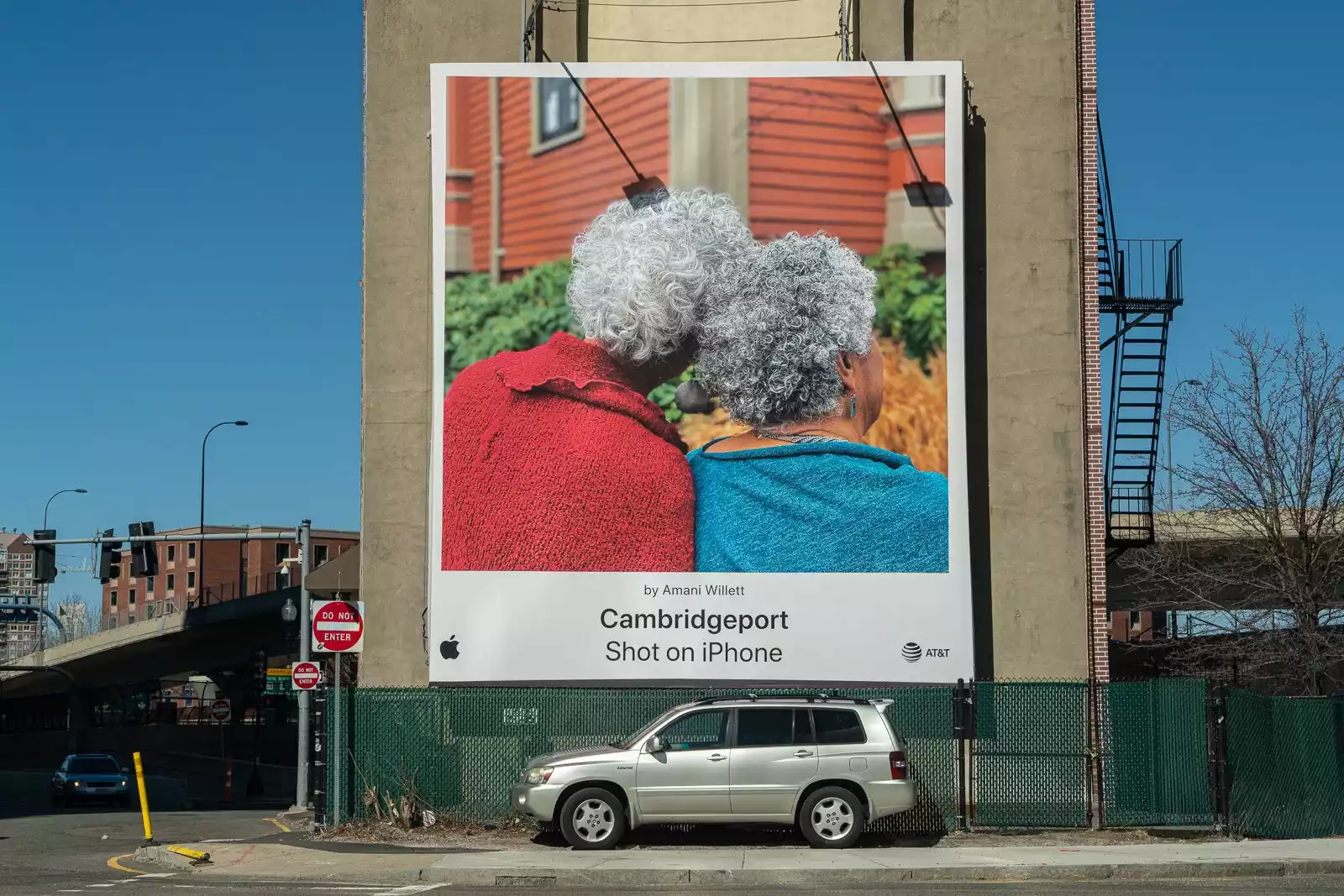How Does Brand Advertising Help The Brand?
If you are still not sure why advertising is a must for your brand, check out the points mentioned. Let's see the benefit of brand advertising.
1. Brand Awareness
Advertising helps implant a brand's image into the audience's mind by promoting it in various places like TV, social media, billboards and more. When the audience is exposed to the brand repeatedly, it makes sure they become familiar with it. This makes sure the brand will be on top of the mind of the customer when making a purchasing decision.
2. Brand Recognition
Through distinctive visual and aural components like its logo, colours, tagline, or jingles, effective brand advertising makes sure that the brand is instantly recognisable. Trust and familiarity are two important elements that affect consumer decision-making, and this recognition promotes both. Customers may choose a brand more easily in a crowded market when it is readily recognisable, which eventually gives it an advantage over rivals.
3. Brand Equity
Brand advertising helps people trust and value your brand. It builds brand equity, which means your brand feels strong and reliable to customers. With strong brand equity, you get loyal customers, better pricing power, and more market share. Ads make this happen by sharing your brand’s message, values, and what makes it special.
4. Differentiation
Brand advertising helps brands stand out in today's competitive market by highlighting their personality, key values, and distinctive selling factors. Through inventiveness, humour, or storytelling, good advertising emphasises the unique qualities of the brand. In addition to drawing in customers looking for certain advantages, this differentiation leaves a lasting impact, guaranteeing that the brand will always be unique and appealing.
5. Emotional Connection
One effective strategy for establishing an emotional bond with customers is brand advertising. Brands may inspire sentiments of trust, joy, inspiration, or belonging by relating relatable stories, appealing to human emotions, or conforming to social norms. Beyond the transactional relationship, these emotional ties create a deeper commitment that promotes advocacy, loyalty, and enduring client connections.
6. Perceived Quality
Consumer perception of a brand's goods or services is influenced by consistent, expert, and superior brand promotion. An effective advertising campaign conveys the brand's commitment to quality and image, which instills trust in its dependability and superiority. Customers are reassured that they are making the right decision and greater prices are frequently justified by this view.
7. Customer Loyalty
By reinforcing favourable associations and experiences, brand advertising fosters enduring relationships with consumers. Customers are more likely to stick with a brand when they connect with it, whether an emotional appeal, consistent quality, or shared values. This devotion is demonstrated by recurring business, word-of-mouth referrals, and a reluctance to move to a rival company despite alluring offers.
8. Market Positioning
Brand advertising establishes a brand as the go-to option for a certain market segment through focused campaigns and creative messaging. Effective advertising aids in creating a unique impression on consumers, regardless of the focus being on sustainability, innovation, luxury, or cost. This effective positioning helps the company to charge premium pricing or dominate its niche over time, attract the right customers, and improve its reputation.
Types of Brand Advertising
-
Traditional Advertising: Print media (magazines, newspapers), radio, television, and outdoor platforms like billboards and transit advertisements are all included. Reaching a large audience through dependable and well-known media outlets is a tried-and-true method of increasing brand awareness.
-
Digital Advertising: This method leverages online platforms like search engines, websites, social media, and mobile apps. This type of advertising includes strategies like display ads, video ads, and search engine marketing, allowing brands to target specific demographics effectively.
-
Social Media Advertising: It focuses on engaging audiences through platforms such as Facebook, Instagram, LinkedIn, and Twitter. It employs interactive content, influencer collaborations, and sponsored posts to drive engagement, build connections, and enhance brand visibility.
-
Content Marketing: It revolves around creating valuable content, such as blogs, videos, infographics, and eBooks, that informs or entertains the target audience. This type of advertising helps position the brand as an authority in its niche while fostering trust and long-term customer relationships.
-
Influencer Marketing: It's collaborating with influencers and content creators to promote the brand. By utilizing their loyal follower base, brands can increase their visibility, credibility, and engagement, tapping into pre-established trust networks.
-
Native Advertising: This method integrates seamlessly into the content of platforms, appearing as a natural part of the user experience. Examples include sponsored articles, product placements, and in-app advertisements, making the advertising feel less intrusive and more organic.
-
Out-of-Home (OOH) Advertising: It uses public spaces for maximum exposure through media like billboards, transit ads, and digital displays. It ensures high visibility, especially in high-traffic areas, and is effective for broad, location-based campaigns.
-
Video Advertising: It combines visuals and storytelling to create emotional connections with viewers. This type includes TV commercials, YouTube ads, and advertisements on OTT platforms, delivering impactful messages through engaging audiovisual content.
-
Affiliate Marketing: It involves partnering with affiliates who promote the brand in exchange for a commission on sales. This is an effective way to expand reach, drive traffic, and generate conversions with minimal upfront investment.
-
Print Advertising: This method utilizes newspapers, magazines, brochures, and flyers to connect with audiences. This traditional medium remains effective for targeting local or niche markets where physical visibility still holds value.
-
Audio Advertising: It capitalizes on platforms like radio, podcasts, and music streaming services such as Spotify. By using auditory storytelling, jingles, or spoken ads, brands can create memorable impressions and engage audiences through sound.
-
Public Relations (PR) Advertising: This method blends PR activities with advertising efforts, such as advertorials or press releases. This type of advertising focuses on building a positive reputation and fostering goodwill, often amplifying the brand’s credibility and trustworthiness.
![Find the Perfect Celebrity Match for Your Brand Find the Perfect Celebrity Match for Your Brand]()
Which Types of Brands Must Do Brand Advertising?
1. New Brands
To create their personality in the market, new brands mostly rely on brand advertising. They help customers recognise, recall, and trust their offerings by raising awareness and setting themselves apart from rivals. These brands could find it difficult to get visible in cutthroat markets without efficient promotion.
2. Established Brands
For even well-known firms to stay relevant in the dynamic marketplace, brand advertising is essential. Regular advertising helps them stay in the forefront of both new and existing clients' minds. Reminding consumers of the reasons behind their brand preference and trust is another important way it helps to increase customer loyalty.
3. Consumer Goods Brands
There is fierce competition for brands that sell commonplace items like food, apparel, and personal hygiene goods. In these competitive sectors, brand recognition and trust are built through advertising. Customers are more likely to choose a well-known brand over competing or generic alternatives.
4. Luxury Brands
Luxury brands must continuously advertise to reinforce their premium image and appeal to high-end clientele. Advertising emphasizes exclusivity, craftsmanship, and quality, helping these brands maintain their aspirational status and justify premium pricing.
5. Tech and Electronics Brands
Staying ahead is essential in an industry that is driven by innovation. Tech and electronics businesses can establish credibility, demonstrate innovation, and establish themselves as pioneers in innovative solutions with the use of brand promotion. Additionally, advertising can convey the brand's dedication to excellence and innovation, which might impact consumer choices.
6. Service-Based Brands
Brand advertising builds credibility and trust in sectors with intangible offerings, such as banking, insurance, and telecommunications. Since consumers are unable to "see" services in person, advertising offers comfort regarding their dependability, security, and client contentment.
7. Retail Brands
Retail brands utilise brand advertising to draw in customers and advertise their shopping experiences, whether they are found in physical stores or on e-commerce platforms. Good advertising builds relationships with customers and encourages them to pick these brands over rivals because of their quality, convenience, or distinctive products.
8. B2B Brands (Business-to-Business)
Even if B2B businesses might not rely on ostentatious advertising, brand promotion is essential for establishing authority, reliability, and trust in specialised markets. By demonstrating their knowledge, dependability, and dedication to resolving issues unique to their industry, they aid them in luring and keeping corporate clientele.
How to Create a Brand Advertising Strategy
Creative blueprints used by companies to etch their identity in the minds of consumers are known as brand advertising strategies. These tactics integrate the brand's values, vision, and tales into daily living in addition to selling items. The many tactics listed below will help you determine whether you have addressed every facet of brand promotion.
1. Define Your Brand
Define your brand identity in detail, taking into account your target market, values, mission, and unique selling propositions. Your advertising plan will be informed by knowing who you want to reach and what makes your business unique.
2. Set Objectives
Establish your goals for the brand promotion you are doing. Increasing brand exposure, boosting sales, creating leads, cultivating brand loyalty, or introducing a new product or service are a few examples.
3. Know Your Audience
To find out the characteristics, inclinations, actions, and media consumption patterns of your target audience, conduct market research. This information will assist you in selecting the best channels to reach your target audience and customise your advertising messages.
4. Check What Others Are Doing
Look at other brands in your space. What are they doing well? Where are they falling short? This helps you find gaps, avoid copycat ideas, and figure out how to stand out.
5. Craft Your Message
Develop a clear and compelling brand message that resonates with your target audience and communicates your brand's value proposition. Your message should be authentic, relevant, and differentiated from competitors.
6. Choose Advertising Channels
Identify the most appropriate advertising channels to reach your target audience based on their preferences and media consumption habits. This could include a mix of traditional channels (e.g., TV, radio, print) and digital channels (e.g., social media, websites, email).
7. Allocate Budget
Based on your goals, target market, and preferred channels, decide how much money to spend on advertising. Make efficient use of your resources to optimise impact and reach while staying within your financial restrictions.
8. Create Creative Content
Create innovative, eye-catching content that successfully conveys your brand message through the channels of your choice. Advertisements, films, pictures, copy, and interactive experiences may all fall under this category.
9. Plan Media Buying
To effectively reach your target demographic, strategically plan and carry out media buying to make sure your commercials are placed at the appropriate times and locations. Take into account elements like ad placements, frequency, reach, and timing.
10. Launch Campaigns
Ad campaigns for your brand should be implemented across the channels of your choice, with careful performance monitoring to maximise outcomes. To assess effectiveness, monitor important metrics including reach, engagement, conversions, and ROI.
11. Measure and Optimise
Analyse and monitor your brand advertising activities' performance versus your goals on a regular basis. Utilise data and insights to pinpoint areas that require enhancement and refine your advertising approach for improved outcomes.
12. Stay Consistent
Across all platforms and touchpoints, keep your advertising campaigns, visual identity, and brand messaging consistent. In the long run, consistency helps you establish audience trust and enhance brand recognition.
13. Adapt and Evolve
Adapt to shifting consumer tastes, industry trends, and technology developments. To remain relevant and competitive in the always-shifting market, be prepared to modify and advance your brand advertising plan.
How a Brand Ambassador Can Help You in Brand Advertising?
Having a brand ambassador can greatly enhance a brand's advertising efforts by building trust and credibility. A well-known figure with a loyal following instantly lends authority to a brand, making it more likely that people will trust and engage with the product or service. This helps the brand stand out in a competitive market and attract a wider audience.
A brand ambassador can also strengthen the audience's emotional bond with the brand. A brand feels more relatable and intimate when it is endorsed by someone the target audience admires. In addition to enhancing brand loyalty, this emotional connection boosts engagement, particularly on social media platforms where ambassadors can communicate directly with their fans.
In the end, a brand ambassador increases brand memory, recognition, and visibility, all of which can result in increased sales and sustained expansion. The business may improve its image and make sure the correct people hear its message by partnering with someone who shares the brand's values.
![Partner with a Leading Celebrities partner-with-a-leading-celebrities]()
8 Best Brand Advertising Examples
Here are a few brand ad examples which show how different brands' popular campaign helped their target audience
1. Amul
![amul-girl.png Amul girl with amul's official logo]()
Amul’s long-running billboard campaign featuring the Amul Girl with witty takes on current events has helped build a strong brand identity. The campaign’s humor, relevance, and consistency make Amul instantly recognizable and relatable to generations of Indians.
2. Coca-Cola
People were urged to establish a personal connection with the brand with this customised ad, which featured bottles with common Indian names. It greatly increased sales and generated a lot of social media discussion, which improved Coca-Cola's reputation as an entertaining and interesting brand in India.
3. Surf Excel
![Surf-excel-daag-achhe-hai-campaign.jpg Surf's Excel's Daag Achhe hai campaign]()
This emotional storytelling campaign, "Daag Achhe Hai" shifted focus from detergent as a product to a message that resonated with families, encouraging kids to explore and learn without fear of getting dirty. It strengthened Surf Excel’s position as a household name in India.
4. Nike
Nike's powerful campaign featuring Indian women athletes broke stereotypes and celebrated fitness, diversity, and empowerment. The high-energy visuals and messaging made it a standout in brand advertising, resonating deeply with Indian audiences.
5. Tanishq
Tanishq's advertising campaigns emphasise inclusivity, diversity, and contemporary Indian ideals. They've established a deep emotional bond with Indian consumers by showcasing genuine, relevant tales, such as intercultural weddings or remarriages, which have strengthened Tanishq's standing as a forward-thinking and reliable jewellery company.
6. Apple
![iphone-shot-on-iphone-campaign.jpg Iphone's "Shot on iphone" campaign]()
With India-specific variations that highlight regional culture and scenery, Apple's worldwide "Shot on iPhone" campaign invites customers to utilise the iPhone's camera to record their favourite moments. This tactic has improved Apple's brand recognition in India by encouraging innovation and the high calibre of the product.
7. Zomato
Indian users loved Zomato's relatable and funny push notifications. In addition to engaging the audience, these succinct, humorous messages help Zomato maintain its position as the industry leader in meal delivery by creating a playful and distinctive brand identity.
8. Cadbury Dairy Milk
In India, Cadbury Dairy Milk's advertising centres on festive occasions, associating the brand with joy and community. The cultural significance and emotional attraction of celebrating with "something sweet" have contributed to Cadbury's rise to fame in India.
These examples show how Indian and foreign firms interact with Indian people and establish powerful brand identities through imaginative, emotive, and captivating brand advertising.
What’s Changing in Brand Advertising Today?
The way brands advertise is not the same as it used to be. People don’t respond to old methods the way they once did. Brands now have to work harder to get attention and build trust. Here are some of the key shifts in today’s brand advertising.
1. Ads Need to Feel Real
People are quick to skip ads that feel fake or too pushy. Brands are now trying to make ads that feel more natural and real. Whether it's a short video, a reel, or a post, it should sound like something a friend would share. This helps the brand feel more human and trustworthy.
2. Personalisation Matters More Than Ever
Everyone wants to feel like the message is just for them. Brands are using data to understand what people like, what they buy, and how they behave online. Then they use that to show ads that match each person’s interests. This makes the ads more useful and less annoying.
3. Short Content Works Better
People don’t have the patience to watch long videos or read long messages. Short, clear, and interesting ads get better results. That’s why brands are using short videos, simple posts, and quick stories to share their message fast.
Conclusion
In short, brand advertising is important for any business. It helps people remember your brand, builds trust, and keeps customers coming back. Whether you’re starting something new or trying to stay relevant, a clear and simple brand advertising plan can help you stand out.
Using different types of ads, strong storytelling, and even known faces can help you connect better with people. When a popular celebrity supports your brand, it often grabs more attention and builds trust faster. If you're looking for the right face to represent your brand, you don’t need to search far.
At Tring, we help you connect with the right celebrities and influencers. Whether you need someone for celebrity endorsements, influencer marketing, or event appearances, we’re here to make the process simple. Reach out to us today!
![birthday occasion]() Birthday Gifts
Birthday Gifts
![anniversary occasion]() Anniversary Gifts
Anniversary Gifts
![women]() Women
Women
![men]() Men
Men
![Couples]() Couples
Couples
![Couples]() Wedding Gifts
Wedding Gifts

 Birthday Gifts
Birthday Gifts
 Women
Women
 Men
Men
 Anniversary Gifts
Anniversary Gifts
 Wedding Gifts
Wedding Gifts





 We now support international payments
We now support international payments
